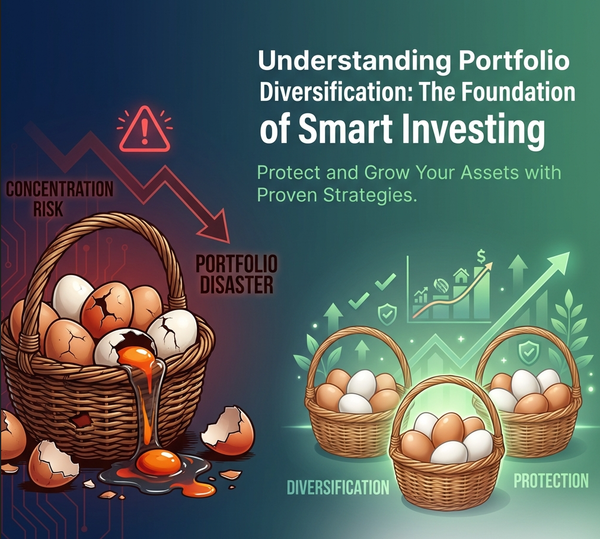AI Investment Strategies Transforming Future Growth: How Artificial Intelligence Drives Smarter Investing
Over the next decade, AI-managed assets are projected to surpass $6 trillion, offering investors precision-driven insights and deeper market intelligence for future growth.

Over the next decade, AI-managed assets are projected to surpass $6 trillion, offering investors precision-driven insights and deeper market intelligence for future growth. For financial professionals facing rapid data expansion, unpredictable volatility, and the imperative to personalize strategies at scale, AI investment strategies for future growth deliver real-time analysis, automated portfolio adjustments, and proactive risk controls. In this guide, you will discover:
- The definition, mechanisms, and real-world example of AI-powered investing
- Core AI technologies fueling smarter decisions
- Key benefits in wealth management and portfolio optimization
- AI’s role in risk management, fraud detection, and compliance
- Enhancements in algorithmic trading and market analysis
- Ethical considerations, data quality challenges, and regulatory impacts
- Forward-looking trends and impacts on jobs and skills
What Are AI Investment Strategies and How Do They Work?
AI investment strategies harness computational intelligence to analyze vast datasets, detect patterns, and execute trades with minimal human intervention. By applying machine learning models and natural language processing, these strategies adapt to evolving market conditions and deliver tailored portfolio guidance. For example, a robo-advisor platform ingests client risk profiles and market signals to rebalance assets automatically, achieving optimized returns and reduced drawdowns.
What Core AI Technologies Power Investment Strategies?
AI-driven investing relies on a suite of interrelated technologies:
- Machine Learning models that train on historical price movements and economic indicators
- Neural Networks that identify complex nonlinear patterns across multiple assets
- Natural Language Processing (NLP) engines that interpret news sentiment, regulatory filings, and social media signals
- Reinforcement Learning algorithms that refine trading policies through simulated market interactions
These technologies combine to create adaptive systems that continuously improve decision-making accuracy and speed, laying the groundwork for enhanced portfolio performance.
How Does Machine Learning Enhance Investment Decisions?
Machine Learning improves investment decisions by uncovering statistical relationships and predictive signals that exceed human analytical capacity. Supervised learning algorithms forecast price trends based on labeled market data, while unsupervised clustering reveals hidden correlations among asset classes. For instance, a predictive model may detect early indicators of sector rotation, enabling timely reallocation and performance edge.Brown, A., Journal of Financial Analytics (2022)
What Role Does Natural Language Processing Play in Finance?
Natural Language Processing interprets unstructured text—such as earnings calls, analyst reports, and geopolitical news—to quantify qualitative insights. Sentiment scores derived from NLP feed into risk models, allowing an investment platform to adjust exposure when negative sentiment spikes. This fusion of textual analysis with numerical indicators ensures portfolios remain aligned with both data-driven signals and shifting market narratives.
What Are the Key Benefits of AI in Wealth Management and Portfolio Optimization?
AI transforms wealth management through advanced personalization, dynamic portfolio construction, and streamlined operations. By automating routine tasks and leveraging predictive analytics, wealth managers can deliver more customized advice, optimize asset allocation in real time, and reduce operational overhead.
How Does AI Personalize Wealth Management Solutions?

AI personalization begins with analyzing an investor’s financial goals, risk tolerance, and spending patterns. A recommendation engine uses clustering algorithms to match each client with an ideal asset mix, adjusting allocations dynamically as objectives evolve. This approach fosters higher engagement and more precise alignment with long-term growth targets.
In What Ways Does AI Optimize Portfolio Allocation and Rebalancing?
Automated portfolio optimization tools apply mean-variance analysis enhanced by real-time factor exposures. Evolutionary algorithms generate thousands of asset combinations, selecting those that maximize return for a given risk level. Continuous rebalancing powered by streaming data ensures that portfolios remain efficient while transaction costs are minimized.
How Does AI Improve Operational Efficiency and Cost Reduction?

AI-driven automation handles repetitive tasks such as data aggregation, performance reporting, and compliance monitoring. Natural Language Generation (NLG) systems draft client reports instantly, cutting hours of manual work. As a result, wealth management firms can serve more clients with the same resources, lowering fees and enhancing scalability.
How Does AI Transform Risk Management and Fraud Detection in Finance?
By processing immense volumes of structured and unstructured data, AI enables proactive risk assessment, sophisticated fraud detection, and streamlined compliance workflows. Financial institutions can identify emerging threats faster, reduce false positives, and adapt to evolving regulatory requirements.
How Does AI Enable Real-Time Risk Assessment?
Real-time risk platforms ingest market feeds, counterparty data, and macroeconomic indicators to compute exposure metrics continuously. Monte Carlo simulations powered by GPU clusters update value-at-risk (VaR) calculations every minute, enabling instantaneous portfolio adjustments to mitigate losses during market shocks.
What AI Techniques Detect Fraud and Enhance Cybersecurity?
Deep learning models recognize anomalous transaction patterns by comparing behavior profiles across millions of accounts. Graph-based algorithms trace suspicious networks of transfers, flagging fraud rings in milliseconds. Combined with behavioral biometrics, these systems proactively protect sensitive financial data and uphold platform integrity.Chen, L., Risk Management in Financial Institutions (2023)
How Is AI Used to Ensure Regulatory Compliance?
Compliance teams leverage AI to parse regulatory texts, map obligations to internal processes, and monitor transactional data for potential breaches. Named Entity Recognition (NER) algorithms identify sanctioned entities, automatically blocking prohibited trades. This automation reduces manual review burdens and strengthens governance controls.
How Is Algorithmic Trading and Market Analysis Enhanced by AI?
Algorithmic trading leverages AI’s capacity to detect fleeting market opportunities and execute orders at high speed. Combined with big data analytics and sentiment analysis, AI-powered platforms deliver deeper market insights and more precise timing.
What Are AI-Driven High-Frequency Trading Strategies?
High-frequency trading (HFT) strategies use AI to optimize order book interactions, minimize slippage, and react to microsecond price movements. Reinforcement learning agents adapt trading kernels to changing liquidity profiles, achieving consistent bid-ask spread capture.
How Does Sentiment Analysis Inform Market Predictions?
Sentiment analysis converts social media and news sentiment into numerical indicators that signal market mood shifts. When unusually positive sentiment aligns with technical breakouts, AI models may increase long equity positions; conversely, spikes in negative sentiment trigger defensive rebalancing.
How Does Big Data Analytics Support AI Trading Models?
Big data platforms aggregate tick-level pricing, alternative data sources (satellite imagery, credit card trends), and economic reports to enrich feature sets. Scalable data pipelines feed AI models with high-dimensional inputs, enabling more robust pattern recognition and reducing the risk of overfitting.
What Are the Risks, Ethical Considerations, and Challenges of AI in Investing?
While AI offers significant advantages, data quality issues, algorithmic bias, and evolving regulations present challenges that require careful governance and oversight.
How Does Data Quality and Model Bias Affect AI Investment Outcomes?
Poor data hygiene—such as missing values, stale feeds, or unrepresentative samples—can skew model predictions and amplify biases. If training data reflect historical inequalities, algorithms may underweight certain sectors or demographic segments. Rigorous data validation and fairness testing are essential to ensure equitable outcomes.
What Ethical Frameworks Guide Responsible AI Use in Finance?
Responsible AI frameworks advocate transparency, accountability, and human oversight. Principles include explainability of model decisions, periodic audits, and clear escalation paths for anomalous outputs. Embedding ethics committees within investment firms promotes trust and aligns strategies with stakeholder values.
How Do Regulatory Landscapes Impact AI Investment Strategies?
Regulators are drafting guidelines around algorithmic accountability, data privacy, and model risk management. Compliance with frameworks such as Basel III, GDPR, and emerging AI governance standards requires documentation of model development, stress testing, and robust audit trails. Proactive alignment with these rules mitigates legal and reputational risks.
What Is the Future Outlook for AI in Finance and Investment Growth?
Generative AI, agentic systems, and more sophisticated predictive models will drive the next wave of innovation in finance. Investors and institutions must adapt to a landscape where human-machine collaboration defines competitive advantage.
How Will Emerging AI Technologies Like Generative AI Shape Finance?
Generative AI will synthesize novel trading strategies, draft regulatory analyses, and simulate market scenarios. These capabilities will accelerate research cycles and offer new avenues for alpha generation by uncovering non-obvious patterns.
What Is the Impact of AI on Financial Jobs and Skills?
Automation of data processing and basic advisory tasks will shift human roles toward strategic oversight, model validation, and client relationship management. Demand for AI-savvy professionals in quantitative research, data science, and AI ethics is set to surge.
How Will AI Continue to Drive Future Growth in Financial Markets?
As AI systems gain sophistication, they will unlock alternative data sources—such as IoT signals and ESG metrics—to fuel predictive analytics. Continuous learning frameworks will enable models to adapt in real time, fostering dynamic markets where predictive accuracy underpins sustained growth.
What Are the Most Common Questions About AI Investment Strategies?
Beneath the surface of AI adoption lie questions around personalization, risk management, and implementation hurdles. Understanding these concerns equips investors to leverage AI effectively.
How Does AI Personalize Investment Strategies for Individual Investors?
AI personalizes strategies by integrating personal financial goals, spending habits, and risk preferences into algorithmic frameworks. Clustering algorithms segment clients into archetypes, while recommendation engines adjust asset mixes in response to changing objectives and market conditions.
What Are the Main Benefits of AI in Portfolio Management?
AI in portfolio management improves return forecasts through enhanced data processing, optimizes risk controls via real-time monitoring, and automates rebalancing to maintain targeted exposures. These benefits translate into more resilient portfolios and higher operational efficiency.
How Does AI Improve Risk Management in Finance?
AI enhances risk management by continuously scanning multi-source data to detect anomalies, forecast volatility, and simulate adverse scenarios. This proactive stance reduces loss potential and ensures compliance with evolving regulatory thresholds.
What Are the Challenges of Implementing AI in Investment Platforms?
Implementation challenges include integrating fragmented data systems, recruiting AI expertise, and establishing robust model governance. Overcoming these hurdles demands investment in infrastructure, talent, and change management to align technology with organizational processes.In embracing AI investment strategies for future growth, financial institutions unlock new levels of insight, personalization, and operational resilience. While ethical considerations and regulatory compliance require ongoing attention, the transformative power of machine learning, NLP, and big data analytics is already reshaping wealth management, risk mitigation, and trading. Investors and firms that cultivate AI expertise and govern models responsibly will lead the next generation of smarter, more adaptive markets.




